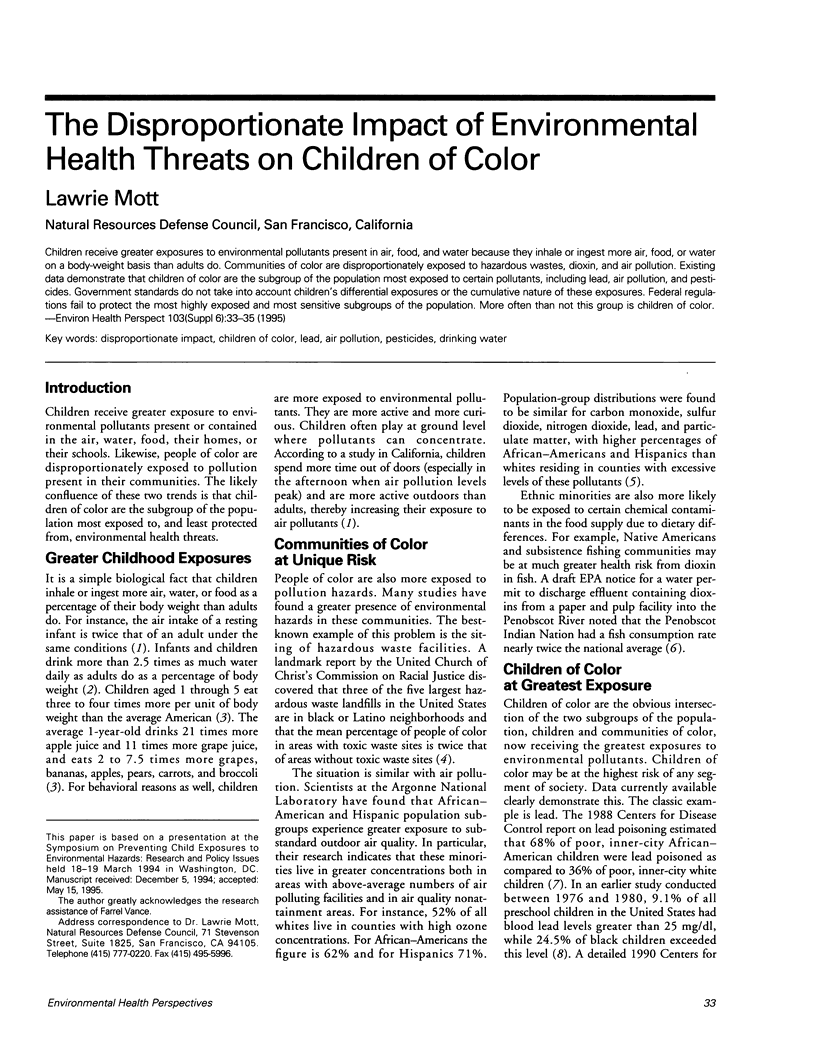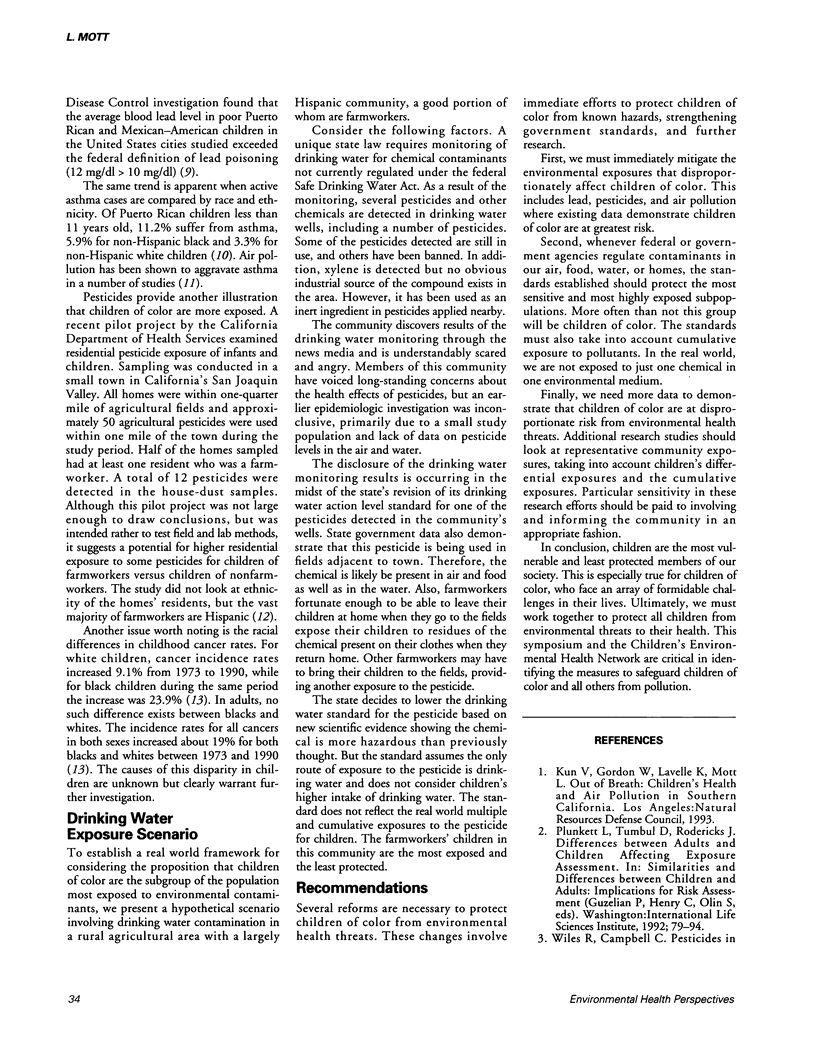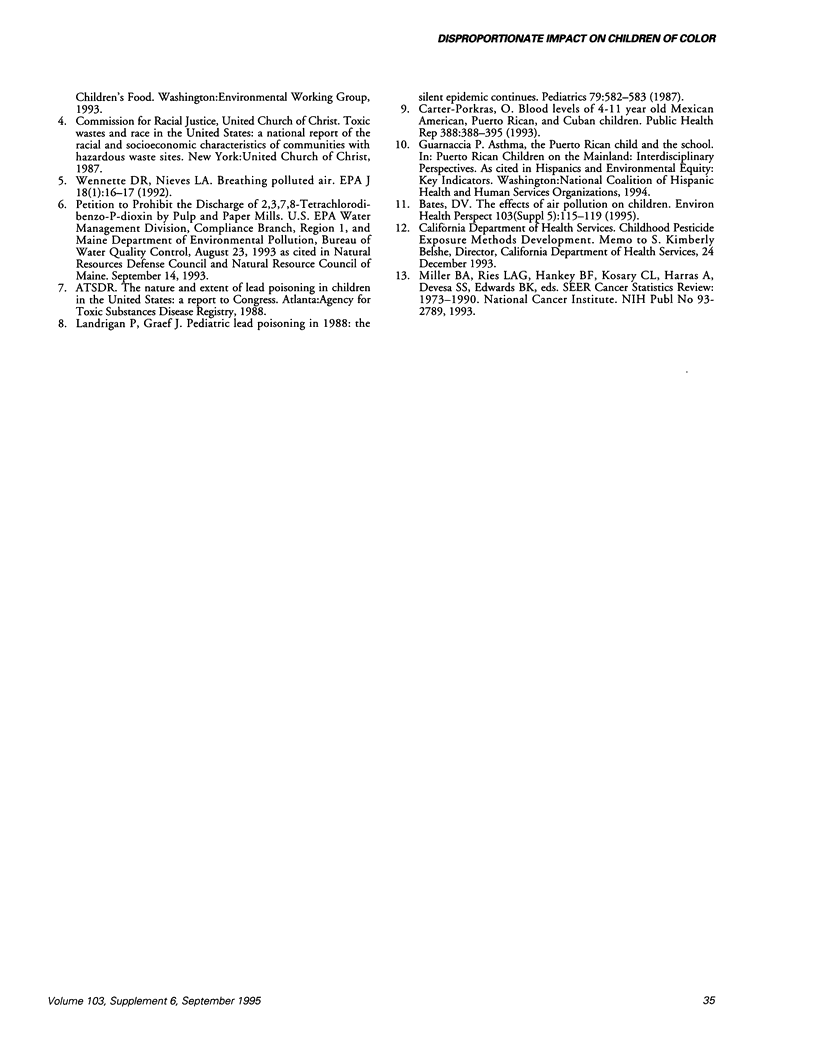Abstract
Children receive greater exposures to environmental pollutants present in air, food, and water because they inhale or ingest more air, food, or water on a body-weight basis than adults do. Communities of color are disproportionately exposed to hazardous wastes, dioxin, and air pollution. Existing data demonstrate that children of color are the subgroup of the population most exposed to certain pollutants, including lead, air pollution, and pesticides. Government standards do not take into account children's differential exposures or the cumulative nature of these exposures. Federal regulations fail to protect the most highly exposed and most sensitive subgroups of the population. More often than not this group is children of color.
Full text
PDF


Selected References
These references are in PubMed. This may not be the complete list of references from this article.
- Landrigan P. J., Graef J. W. Pediatric lead poisoning in 1987: the silent epidemic continues. Pediatrics. 1987 Apr;79(4):582–583. [PubMed] [Google Scholar]


